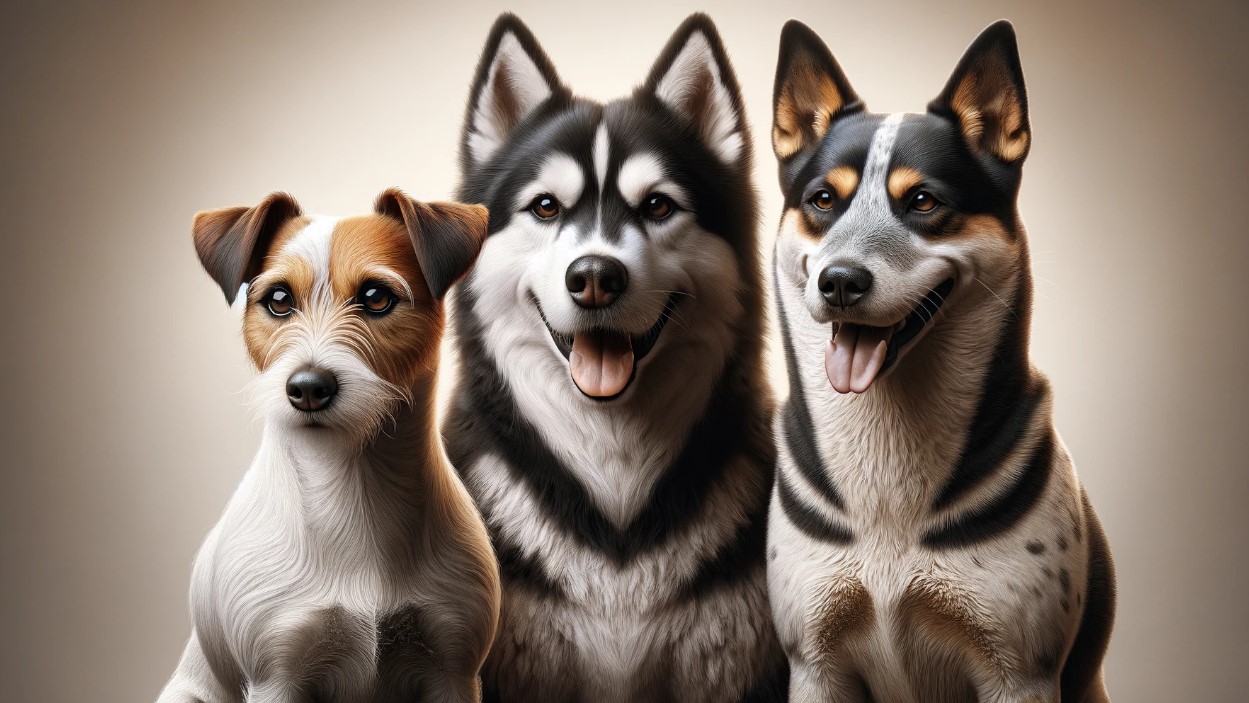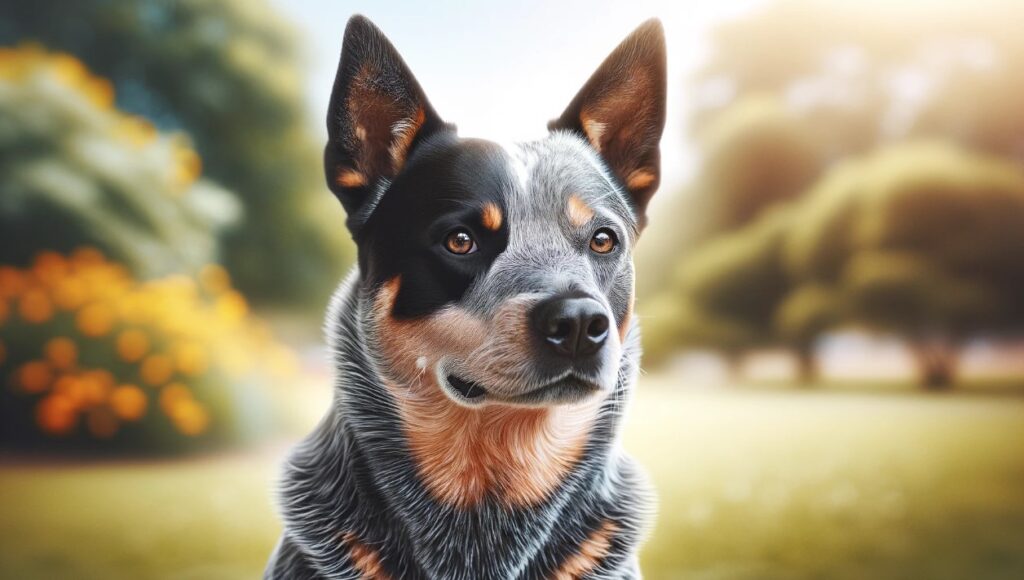As a devoted pet parent, you want your furry family members to get along swimmingly. However, if you’re a cat owner considering adding a dog to your household mix, it’s vital to choose the right breed. Some dog breeds naturally coexist better with feline companions, while others might not be the best fit. So, which are the worst dog breeds for cats? Let’s dive into that.

Cats and dogs, despite being distinctively different species with different instincts, can indeed form heartwarming bonds. Nonetheless, the success of their relationship often depends on various factors. These include their natural temperaments, individual personalities, early socialization experiences, and, of course, their breed-specific traits.
Common disputes between dogs and cats typically revolve around territory, or stark differences in play styles. Some dogs, unfortunately, view cats as prey, while others may be too overbearing or boisterous for the typically more reserved feline demeanor.
Among the dog breeds that can pose challenges for cat households are certain terriers and hounds. Terriers, originally bred for hunting and vermin control, can have high prey drives, making them less ideal for homes with cats. Hounds, particularly scent hounds, can also be problematic due to their instinctual urge to chase.
But don’t despair! Remember that every dog, regardless of breed, is an individual, and there’s always room for training and socialization to promote a peaceful cohabitation. It’s about understanding their unique traits and needs and guiding them towards a harmonious relationship with your feline friend. After all, having a pet-friendly home where everyone gets along is the ultimate goal.
You’re about to embark on an enlightening journey, as we explore the worst dog breeds for cats and how to foster a feline-friendly home. So, buckle up and let’s get started!
Understanding Cat-Dog Relationships
Ever wondered what happens when a dog sees a cat for the first time? The interaction and dynamics between these two popular pets can be intriguing. Unraveling the secrets behind their relationships can help us create harmonious homes for our furry friends. So, let’s dive into the world of natural instincts and factors influencing cat-dog relationships!
Natural Instincts of Cats and Dogs
Cats and dogs have very different instincts rooted in their evolutionary history. Dogs, as pack animals, are intrinsically social and cooperative. They are wired to be a part of a ‘team,’ with clear roles and responsibilities. This is why dogs often seek companionship and approval.
On the other hand, cats come from a lineage of solitary hunters. They value their independence and territory. Cats usually hunt smaller prey, and hence, a dog’s larger size can be intimidating. Their solitary nature can make them less inclined to socialize with other animals, including dogs.
These instincts can create conflicts in a shared space. But don’t lose hope just yet. Understanding the worst dog breeds for cats is the first step towards responsible pet ownership. With this knowledge, you can ensure both your cat and dog thrive in the same environment.
Factors Affecting Cat-Dog Relationships
Several factors influence how well cats and dogs can coexist. These include breed, age, socialization, and previous experiences.
- Breed: Some dog breeds have strong prey drives or territorial instincts, making them less suitable for homes with cats. Understanding which are the worst dog breeds for cats can help avoid potential conflicts.
- Age: Puppies and kittens tend to adapt more quickly to each other. Adult dogs and cats may have a harder time adjusting, especially if they’ve had negative experiences with the other species in the past.
- Socialization: Early exposure to the other species can significantly influence how a dog or cat reacts. Pets that are well-socialized from a young age tend to be more accepting of other animals.
- Previous Experiences: Past experiences with the other species can also impact a pet’s reactions. A dog that has been scratched by a cat before, or a cat that has been chased by a dog, will likely be more wary or fearful.
Understanding these factors is critical when considering introducing a new pet into your household. Keep in mind that there’s no one-size-fits-all answer. Every animal is an individual with its own personality and quirks. It’s crucial to consider these factors while making your decision, especially when you’re looking for a dog breed to add to a cat-friendly home.
So, before you fall in love with a particular breed, remember you’re not just choosing a pet. You’re introducing a new member to your family. This decision should be taken with care to ensure both your cat and the new dog can coexist peacefully. After all, our pets rely on us to make the best choices for their well-being.

Common Issues Between Dogs and Cats
Territory Disputes
Sharing a living space can be a challenging task, especially between two different species like cats and dogs. Both cats and dogs mark their territories and are protective of their spaces. This is part of their survival instinct. However, this nature can lead to territory disputes between them.
For instance, your dog may see the entire house as its territory while cats usually prefer specific places such as the top of a bookshelf or under a piece of furniture. If your dog invades these spaces, it may result in conflict. Some dog breeds are known for their territorial instincts and may not take kindly to a cat intruding in their space.
In addition, sharing resources such as food bowls, litter boxes, or sleeping areas can lead to disputes. Dogs and cats both have unique feeding habits and prefer to eat in peace without feeling threatened. Dog breeds with high prey drive may see the cat’s food or the cat itself as prey, causing tension.
Differences in Play Styles
Another common issue arises from the difference in play styles between dogs and cats. While both species enjoy playtime, their styles of playing and levels of energy greatly differ.
Dogs usually have high energy levels and enjoy physical play such as running, fetching, and wrestling. They display their friendliness by being bodily expressive, which includes wagging their tails, jumping, or even play biting. On the other hand, cats are more independent, enjoy stalking and pouncing games, and prefer not to be chased or jumped on.
Specific dog breeds, especially those that are bred for hunting or herding, may have intense play styles that can overwhelm or intimidate a cat, leading to stress or fear. For instance, terriers have a natural instinct to chase and grab small creatures, which may not bode well for a feline companion.
Prey Drive
Prey drive is the instinctive inclination of a carnivore to find, pursue, and capture prey. While all dogs have a certain level of prey drive, it is more pronounced in some breeds. Breeds such as greyhounds, huskies, and other hunting breeds have a high prey drive and may see smaller animals, including cats, as prey.
Cats, being smaller in size and often behaving like prey (i.e., running fast and hiding), can trigger a dog’s prey drive. This not only contributes to conflicts but also poses a serious risk to the cat’s safety.
In conclusion, it is crucial to understand these issues when trying to create a harmonious home for both dogs and cats. Understanding the specific characteristics and behavior of different dog breeds can significantly help in choosing a breed that is compatible with your feline friend, reducing the instances of the aforementioned issues.
Worst Dog Breeds for Cats
When you’re a pet owner who wants to bring both cats and dogs into your home, it’s crucial to understand that not all dog breeds will cohabitate peacefully with cats. Here we will explore some of the worst dog breeds for cats, detailing their specific characteristics and why they may not be the optimal choice for a cat-friendly home.
Australian Cattle Dogs
Australian Cattle Dogs are known for their high energy levels and strong herding instincts. These instincts can cause problems when they’re paired with cats. The dog may try to herd the cat, which can lead to stress for both animals. Their high energy levels might also be overwhelming for a calm and independent cat.
Siberian Huskies
Siberian Huskies are a breed that has a high prey drive. This means they have a natural instinct to chase and catch small animals, which unfortunately can include cats. They’re also known for their high energy levels and need for mental stimulation, which can lead to problematic interactions with cats.
Jack Russell Terriers
Jack Russell Terriers are a high-energy breed with a strong prey drive. They’re curious, active, and love to chase, which unfortunately can result in them viewing cats as a source of entertainment rather than a fellow pet. This can create a stressful environment for cats, who generally prefer a more peaceful and quiet home.
Afghan Hounds
Afghan Hounds are an independent and aloof breed. Their hunting instincts from their origins as desert coursing hounds can lead them to view smaller animals, including cats, as prey. Additionally, their independent nature can make them less inclined to forge peaceful relationships with cats.
Beagles
Beagles, like Huskies and Terriers, have a high prey drive due to their background as hunting dogs. They’re known for their strong sense of smell and may become fixated on investigating and chasing cats in the home.
Why These Breeds May Not Be Cat-Friendly
Understanding the characteristics of these breeds provides insight into why they might not be ideal for a feline-friendly home. Breeds with a high prey drive like the Siberian Husky, Beagle, and Jack Russell Terrier are likely to pursue cats due to their natural instincts to chase and capture small animals.
Energetic breeds such as the Australian Cattle Dog and Jack Russell Terrier might be too boisterous and active for a cat’s liking. Cats prefer a peaceful, quiet home while these breeds thrive on activity and could potentially cause stress to cats with their incessant need for play and interaction.
Lastly, the aloof and independent nature of the Afghan Hound may not lend itself well to cohabitating with cats. Cats require a certain level of respect for their space and independence, which may not be adequately provided by an Afghan Hound.
In conclusion, when considering adding a dog to your cat-friendly home, understanding breed characteristics is crucial. Opting for a breed that is known to be more cat-friendly can make for a far more harmonious home.

Terrier Breeds: Not the Best Choice for Cats
Now, let’s dive into the world of terrier breeds. These energetic, feisty, and often stubborn dogs are known for their high spirits and tenacious personalities. Originally bred for hunting and killing vermin, terriers are instinctively driven by their prey drive. This can make them a less-than-ideal choice for households with cats.
Overview of Terrier Breeds
Terriers come in all shapes and sizes, from small breeds like the Jack Russell and West Highland White Terrier to larger breeds like the Airedale. Despite their size differences, most terriers share common traits. They’re known for their energetic and lively nature, their strong prey drive, and their independent streak.
These breeds were developed to hunt and dig out small animals, a trait that’s still very much a part of their personality today. This means that a moving cat can trigger their instinct to chase, which can lead to conflicts and stress in a multi-pet household.
Why Terriers May Not Be Suitable for Homes with Cats
While every dog is an individual and there are certainly exceptions, terriers as a group tend to be less compatible with cats for several reasons:
- High Prey Drive: Terriers have a strong instinct to chase and catch small animals. This can make cohabitation with a cat challenging, as the dog may see the cat as prey rather than a companion.
- Energetic and Playful: Terriers are known for their high energy levels and love of play. However, their style of play can be too rough for cats, leading to potential injuries and stress for the feline.
- Stubborn and Independent: Terriers are often independent thinkers, which can make training more challenging. If a terrier decides to chase a cat, it may be difficult to redirect their focus.
It’s important to remember that these are generalizations, and individual dogs may not fit these characteristics. However, if you’re a cat owner considering a terrier, it’s important to be aware of these potential issues.
While it’s not impossible for a terrier and a cat to live together peacefully, it often requires careful management, training, and socialization. It may be easier to choose a breed known for being more cat-friendly, especially if you’re a first-time dog owner or if your cat is particularly timid or anxious.
Remember, creating a harmonious multi-pet household is about more than just choosing the right breed. It’s also about understanding and respecting the needs and boundaries of all your pets.
So, while terriers can make wonderful pets, they might not be the best choice if you’re looking to maintain a feline-friendly home. If you’re set on a terrier, consider seeking advice from a professional dog trainer or behaviorist to ensure a smooth transition and a peaceful cohabitation.
Hound Breeds: Potential Problems for Feline Companions
Hound breeds are known for their sharp senses and exceptional tracking skills. These characteristics, while advantageous for hunting and tracking, can potentially create issues in a cat-inclusive household. Let’s delve into these breeds and understand why they might not be the best fit for a home with a cat.
Characteristics of Hound Breeds
Hound breeds come in all shapes and sizes, from the tiny Dachshund to the majestic Irish Wolfhound. Despite their physical differences, all hound dogs share certain characteristic traits. As natural hunters, hounds possess a keen sense of smell and sight, and they are typically very persistent and focused when they are tracking something. They also have a high prey drive, meaning they are instinctively inclined to chase, catch, and sometimes kill small animals.
Another characteristic of hound breeds is their independence. These dogs were bred to hunt with minimal human intervention, making decisions on their own while on the trail. Due to this, they can be stubborn and hard to train, especially when it comes to cohabitation with cats.
Issues That May Arise with Hounds and Cats
Given their high prey drive, hounds might see cats as potential prey rather than companions. This could lead to aggressive chasing and even harmful interactions if not monitored closely. Furthermore, their heightened senses, particularly smell and sight, can make living with a cat quite stimulating and often too much to resist.
If a cat runs, a hound breed is likely to give chase, driven by their instinctual urge to hunt. This can lead to stress and anxiety for the cat, making the living situation far from ideal. In addition to this, hounds are generally more interested in tracking scents than in playing, which can lead to a disconnect between the dog and cat’s preferred styles of interaction.
Bringing a hound into a cat-friendly home is not necessarily a bad idea, but it does require extra caution and work. Introductions must be done carefully and slowly, and training should begin immediately. However, even with extensive training, there is no guarantee that a hound will ever be entirely trustworthy around cats.
Notable Hound Breeds to Be Cautious Of
Some hound breeds that are known to have a high prey drive and can pose a potential problem for cats include:
– Greyhounds: Bred for speed and chasing, they might perceive cats as prey.
– Beagles: Known for their exceptional sense of smell, they might find a cat’s scent too tempting to ignore.
– Afghan Hounds: Independent and aloof, they might not be interested in forming a bond with a cat.
– Foxhounds: Bred for hunting foxes, they might be too excitable around smaller animals like cats.
Remember, every dog is an individual, and breed tendencies do not guarantee a particular behavior. However, it’s crucial to understand these tendencies when bringing a new pet into a home with a resident cat. Weigh the potential risks and rewards carefully to ensure a feline-friendly home.

Ways to Improve Dog-Cat Relationships
Despite knowing the worst dog breeds for cats, it’s important to remember that breed isn’t everything; individual temperament and training can greatly influence how a dog interacts with a cat. That said, let’s delve into some ways on how to improve dog-cat relationships for a harmonious household.
Training Methods for Better Cohabitation
Training plays a crucial role in managing peaceful cohabitation between cats and dogs. Here are some effective training methods you can try:
- Positive reinforcement: Use treats, praise, or toys to reward your pets whenever they behave well with each other. This encourages positive association and promotes good behavior.
- Proper socialization: Introduce your dog to different animals at an early age to help them get accustomed to various species, including cats. Early socialization can help reduce aggression or fear towards cats.
- Command training: Train your dog to follow basic commands such as ‘sit’, ‘stay’, and ‘leave it’. This will give you more control over their interactions with the cat.
- Supervised playtime: Supervise their interactions until you’re sure they can safely coexist. This will also give you a chance to intervene if things get too rough.
Tips for Introducing a New Dog to a Cat
Successfully introducing a new dog to a cat can pave the way for a peaceful relationship. Here are some tips to help with the process:
- Slow introductions: Don’t rush the process. Allow both pets to adjust to each other’s presence gradually. Start by keeping them in separate rooms and let them get used to each other’s scent before a face-to-face meeting.
- Controlled meetings: When they finally meet, keep the dog on a leash. This ensures the dog can’t chase the cat, and the cat has a chance to retreat if it feels threatened.
- Watching for signs of stress: Keep a close eye on their behavior. If either pet shows signs of stress or aggression, it’s best to separate them and try again later.
- Equal attention: Make sure to pay equal attention to both pets to avoid jealousy. It’s important to reassure your existing pet that they are still loved and valued in the home.
Remember, it’s largely about patience and persistence. In some cases, it can take weeks or even months for a dog and cat to comfortably live together. But with the right approach and techniques, it’s entirely possible to improve the relationship between the worst dog breeds for cats and their feline companions. Never force the relationship, instead, let it develop naturally over time, ensuring a feline-friendly home.
A Recap of the Worst Dog Breeds for Cats
For a quick refresher, let’s remember the breeds that might pose challenges when it comes to fostering harmonious cohabitation with cats. These include specific terrier breeds, known for their feisty and energetic nature, and the hound breeds, which are naturally driven by their hunting instincts – characteristics that can put them in direct conflict with the independent and territorial nature of cats.
Final Thoughts on Maintaining a Feline-Friendly Home
While the breeds we discussed may be considered some of the worst dog breeds for cats, it’s important to remember that the temperament of each individual dog varies greatly. The breed doesn’t solely determine whether a dog will get along with a cat – it’s just one of the factors. An individual dog’s personality, upbringing, and training also play critical roles.
In light of the factors that influence cat-dog relationships, it’s crucial to be mindful of your pet’s individual needs and personalities. Remember, a peaceful home is not necessarily one without dogs; it’s one where both cats and dogs are understood, respected, and loved.
Ensuring that your home is a peaceful sanctuary for both your feline and canine companions involves careful observation, patience, and understanding. It’s about helping them navigate their differences and find common ground. Maybe they’ll end up tolerating each other, or better yet, they might become the best of friends.
Remember, proper training is key. It’s the best way to manage and rectify any behavioral issues that might arise. If you do decide to bring a dog into a home with a cat, or vice versa, take the time to introduce them slowly and carefully. Give them the space to understand and get used to each other’s presence.
So, dog and cat lovers out there, don’t lose heart. Yes, it can be a challenge to find the perfect dog breed that will mesh well with your feline friend. But with patience, training, and lots of love, it is not impossible to create a peaceful and loving home for all your pets.
Frequently Asked Questions
Q1: Which dog breeds are considered the worst for cats?
A: Some dog breeds that are often not recommended for homes with cats include the Siberian Husky, the Alaskan Malamute, and the Australian Cattle Dog. These breeds have a high prey drive and may see cats as prey rather than companions.
Q2: Are there any dog breeds that are generally good with cats?
A: Yes, there are several dog breeds that are known to get along well with cats. These include the Golden Retriever, the Bichon Frise, and the Labrador Retriever. However, individual dog personalities can vary greatly, so it’s always important to properly introduce any new pets to each other.
Q3: What factors make a dog breed bad for a home with cats?
A: Factors that can make a dog breed unsuitable for a home with cats include a high prey drive, a strong instinct to chase, and a lack of socialization with cats. Some breeds are also more territorial or aggressive, which can cause problems with cats.
Q4: Can training help a dog get along with cats?
A: Yes, training can often help a dog learn to get along with cats. However, it’s important to remember that some breeds have instincts that can be difficult to overcome with training alone. It’s always best to consult with a professional trainer or behaviorist if you’re having trouble.
Q5: Are there any signs that a dog might not be good with cats?
A: Signs that a dog might not be good with cats include aggressive behavior, excessive chasing, and inability to calm down around cats. If a dog shows these signs, it’s important to separate them from the cat and seek professional help.
Dr. Candy, a holistic veterinarian and certified raw dog food nutrition specialist, graduated from Oklahoma State University in 2009 with a DVM and has since specialized in companion animal nutrition, advocating for species-specific diets. With a background in wildlife rehabilitation and oil spill response, she combines holistic health and conventional medicine in her unique approach to treating chronic diseases, allergies, and autoimmune conditions in pets. As the owner of a veterinary practice in Colorado and an author, Dr. Candy is dedicated to educating pet parents and improving the health and happiness of animals.




